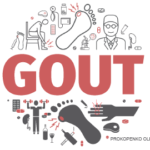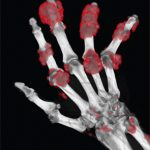In another section of the Plenary Session, Toby Maher, MB, MSc, PhD, a professor of clinical medicine, the University of Southern California, Los Angeles, discussed the results of the RECITAL trial: Rituximab vs. Cyclophosphamide for the Treatment of Connective Tissue Disease-Associated Interstitial Lung Disease (CTD-ILD). Although the trial failed to demonstrate the superiority of rituximab over cyclophosphamide, both treatments improved forced vital capacity (FVC), other disease characteristics and patient quality of life.5
Although biologic therapies have led to significant improvements in the management of connective tissues diseases over the past 20 years, treating the complication of ILD is remains challenging. CTD-ILD carries a significant risk of morbidity and mortality. The FDA has not approved any treatments for CTD-ILD.5
Little prospective data are available on different treatment options. Many clinicians have defaulted to cyclophosphamide as the first-line treatment for severe or progressive CTD-ILD because it had the most prospective evidence.6 However, Dr. Maher noted that cyclophosphamide is often poorly tolerated, and it also carries risks, such as bladder cancer and infertility. Over the past few years, evidence has grown to support the potential use of rituximab in patients with CTD-ILD. Many clinicians now employ it off label as rescue therapy in treatment-refractory CTD-ILD.7
RECITAL Results
The RECITAL trial, the first randomized controlled trial to assess rituximab in patients with various CTD-ILDs, was performed when Dr. Maher was with the Royal Brompton Hospital and Imperial College, London. The double-blind, double-dummy, phase 2B basket trial analyzed patients with severe or progressive ILD due to idiopathic inflammatory myositis, systemic sclerosis or mixed connective tissue disease who were appropriate candidates for cyclophosphamide therapy.5
The researchers assigned 51 patients to the rituximab group (1,000 mg intravenously at weeks 0 and 2) and 50 to the cyclophosphamide group (600 mg/m² body surface area intravenously every four weeks). Patients who had previously received cyclophosphamide or rituximab were excluded, as were any receiving any other immunosuppressants (other than oral corticosteroids) within two weeks of starting the trial.
At 24 weeks, the study drugs were stopped, and the local treating physician prescribed whatever treatment was deemed appropriate (e.g., mycophenolate mofetil, rituximab). Notably, another dose of rituximab was not necessarily given at six months, as might now be commonly done in clinical practice.
At the American Thoracic Society International Conference earlier this year, Dr. Maher’s group presented primary end point data comparing the FVC of the two groups at 24 weeks. Explained Dr. Maher, “If anything, there was a slight treatment advantage of cyclophosphamide, and that was preserved through to 48 weeks. Overall, by week 48 we saw about a 5% improvement in FVC in the cyclophosphamide group and approximately a 4% improvement compared to baseline in the rituximab group, suggesting almost certainly that both drugs had a positive benefit in this patient group.”




